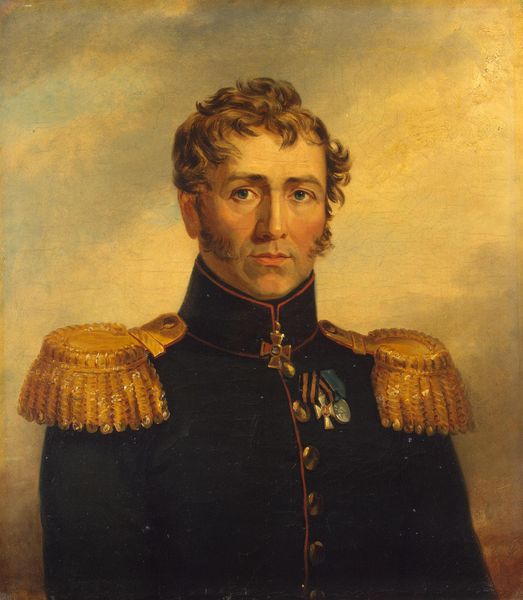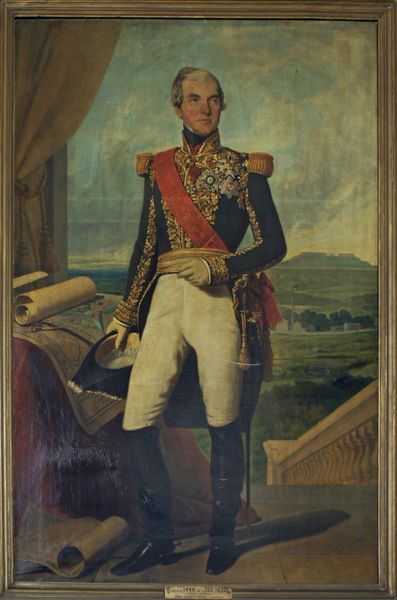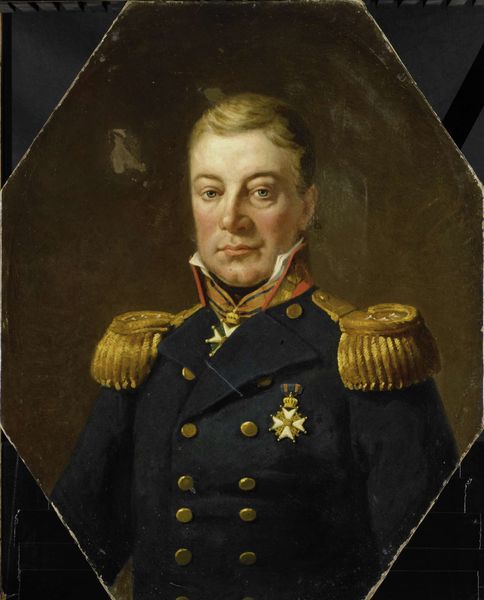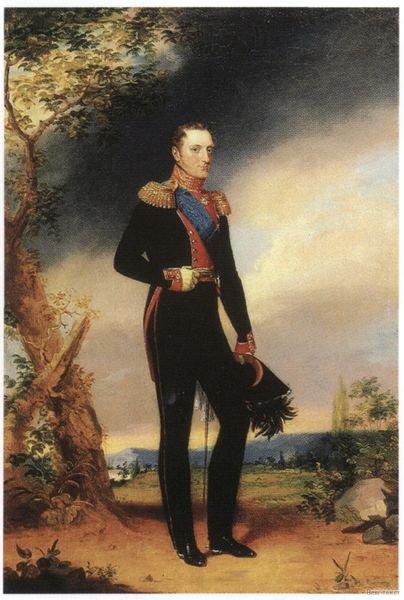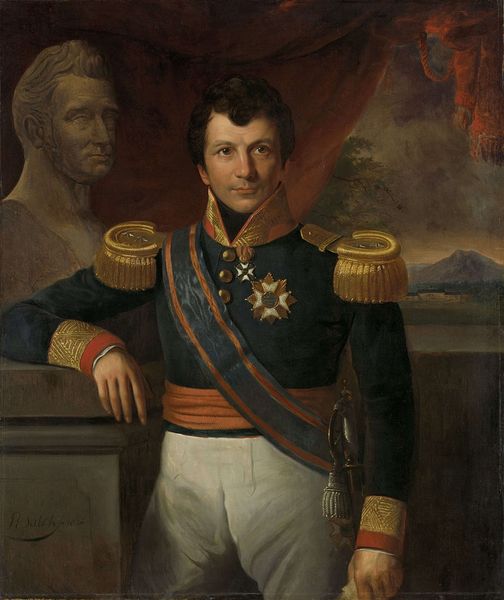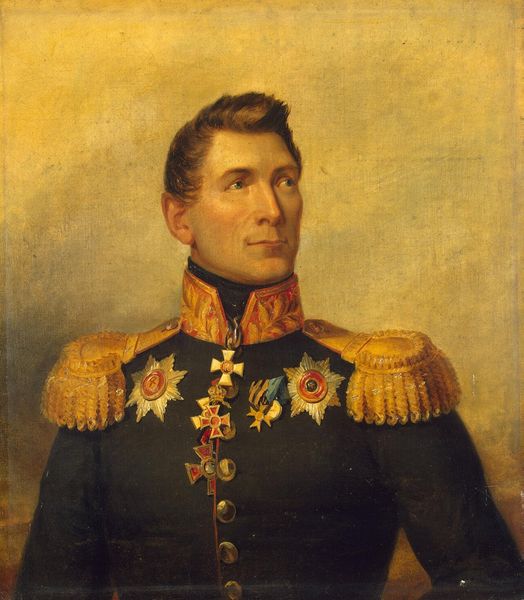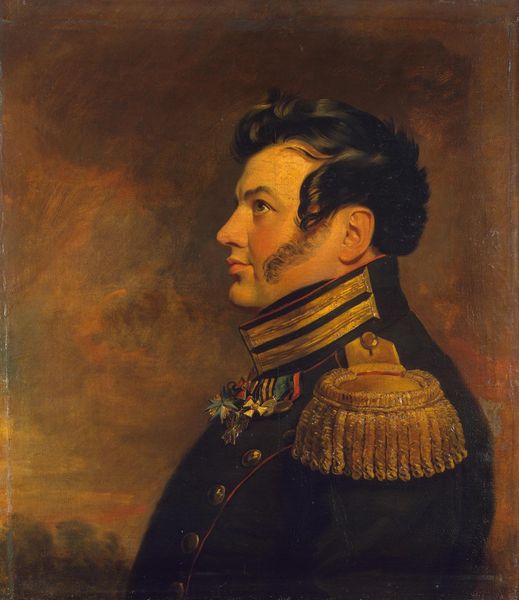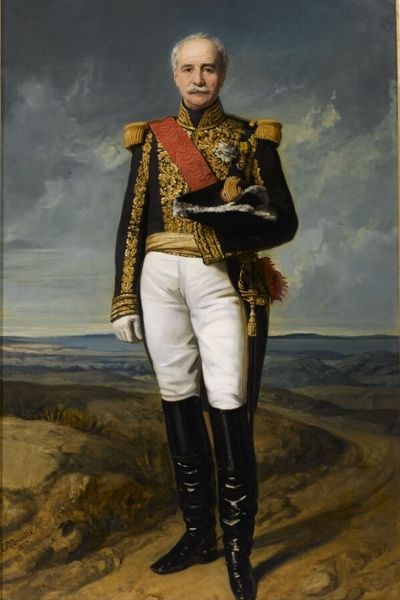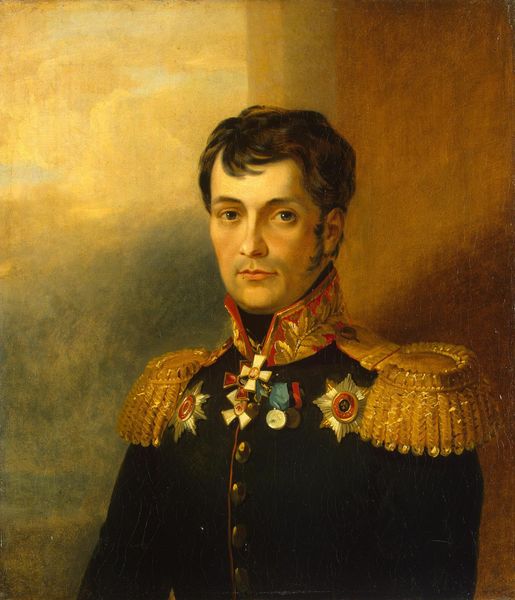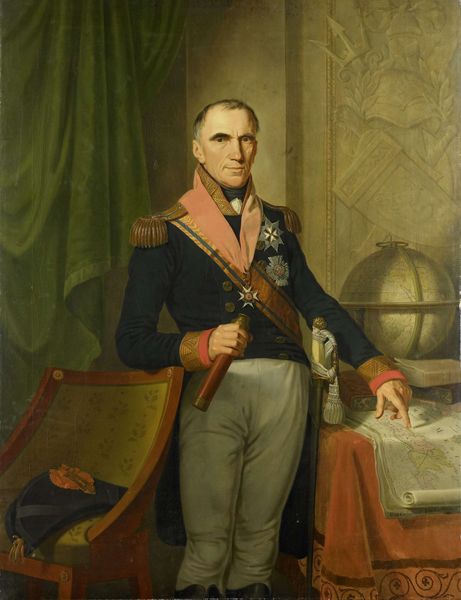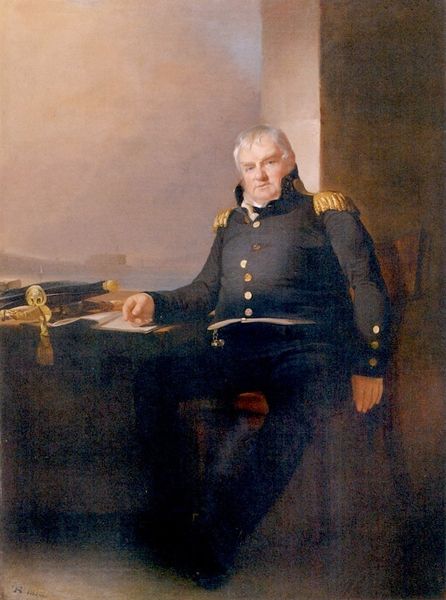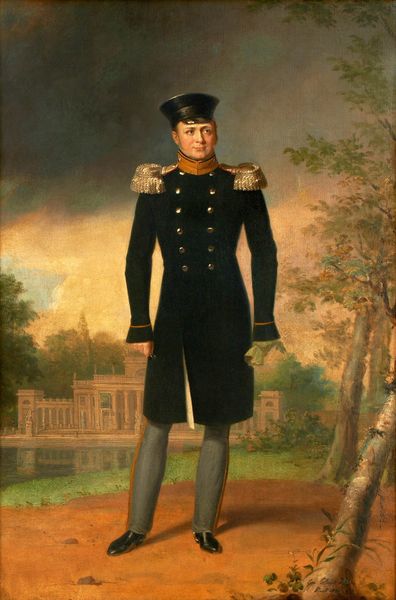
painting, oil-paint
#
painting
#
oil-paint
#
figuration
#
romanticism
#
history-painting
#
academic-art
#
realism
Copyright: Public domain
Editor: Here we have George Dawe’s "Portrait of Count Alexey Arakcheyev," painted in 1823. It's oil on canvas, depicting a stern-looking man in military dress. The background is quite bleak. What do you see in this piece beyond a formal portrait? Curator: Well, beyond the surface, it's crucial to understand Arakcheyev's deeply controversial role in Russian history. He was a key figure in implementing autocratic policies under Alexander I. Consider how Dawe positions him against the backdrop of military buildings; does that symbolize anything to you? Editor: I suppose it emphasizes his military authority? Curator: Exactly. But I think it also hints at the brutal discipline and oppressive atmosphere associated with the military settlements Arakcheyev oversaw. We need to examine the implications of power and the representation of figures who embody authoritarianism. How might his stern expression play into that reading, do you think? Editor: It definitely projects an image of strength, maybe even ruthlessness. It seems the artist made a choice to highlight his unyielding persona. Curator: Precisely. This portrait, while seemingly straightforward, can be viewed as a critical examination of power, control, and the legacy of figures who shape history through oppressive means. Considering Romanticism's interest in the individual and the sublime, does Arakcheyev's portrait fit neatly, or does it offer something more complicated? Editor: That gives me a lot to think about. It shifts the focus from simple representation to the politics inherent in portraiture. Thanks! Curator: My pleasure. It's about digging deeper, isn't it, and revealing the complex layers beneath the surface.
Comments
No comments
Be the first to comment and join the conversation on the ultimate creative platform.
